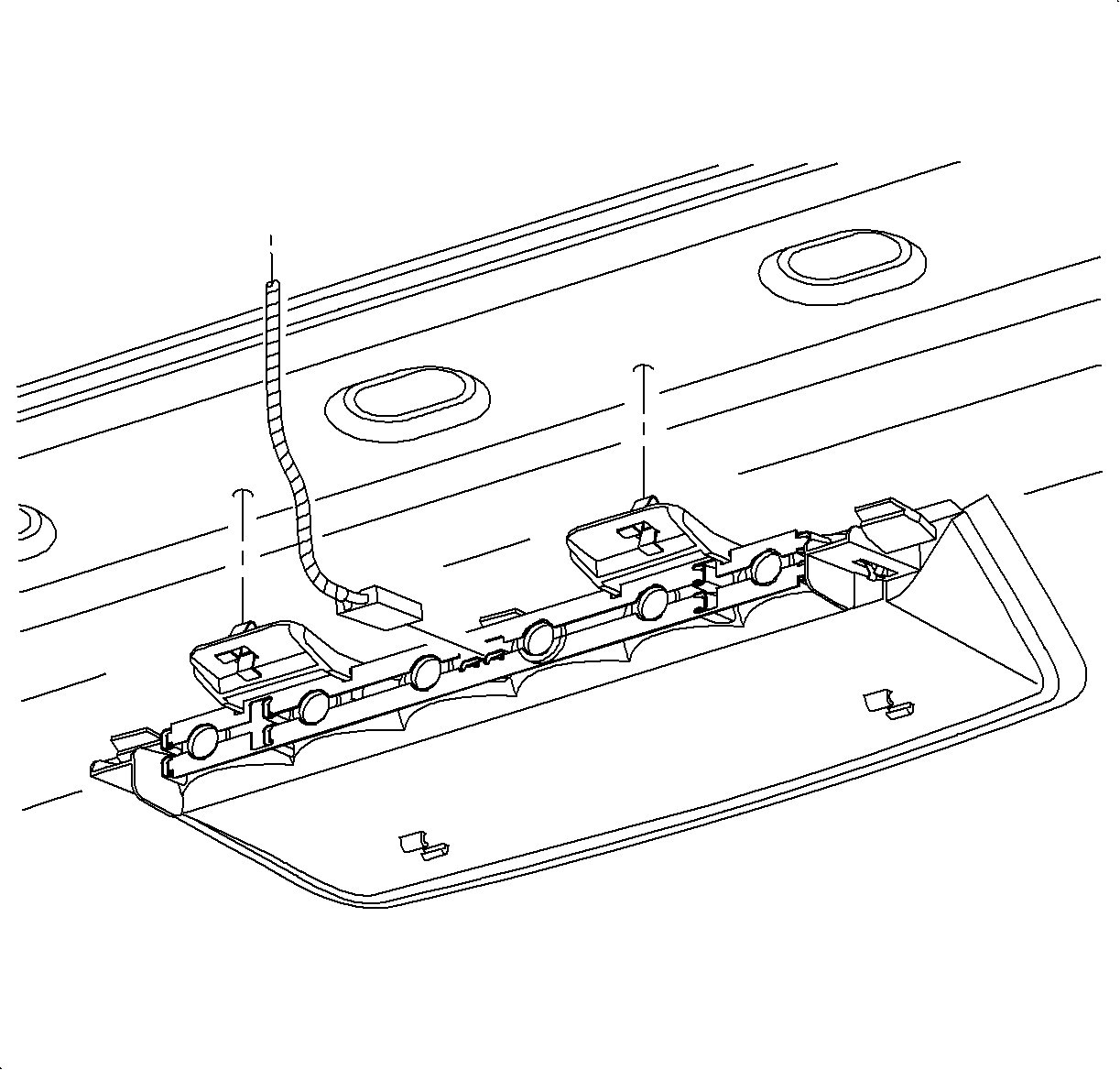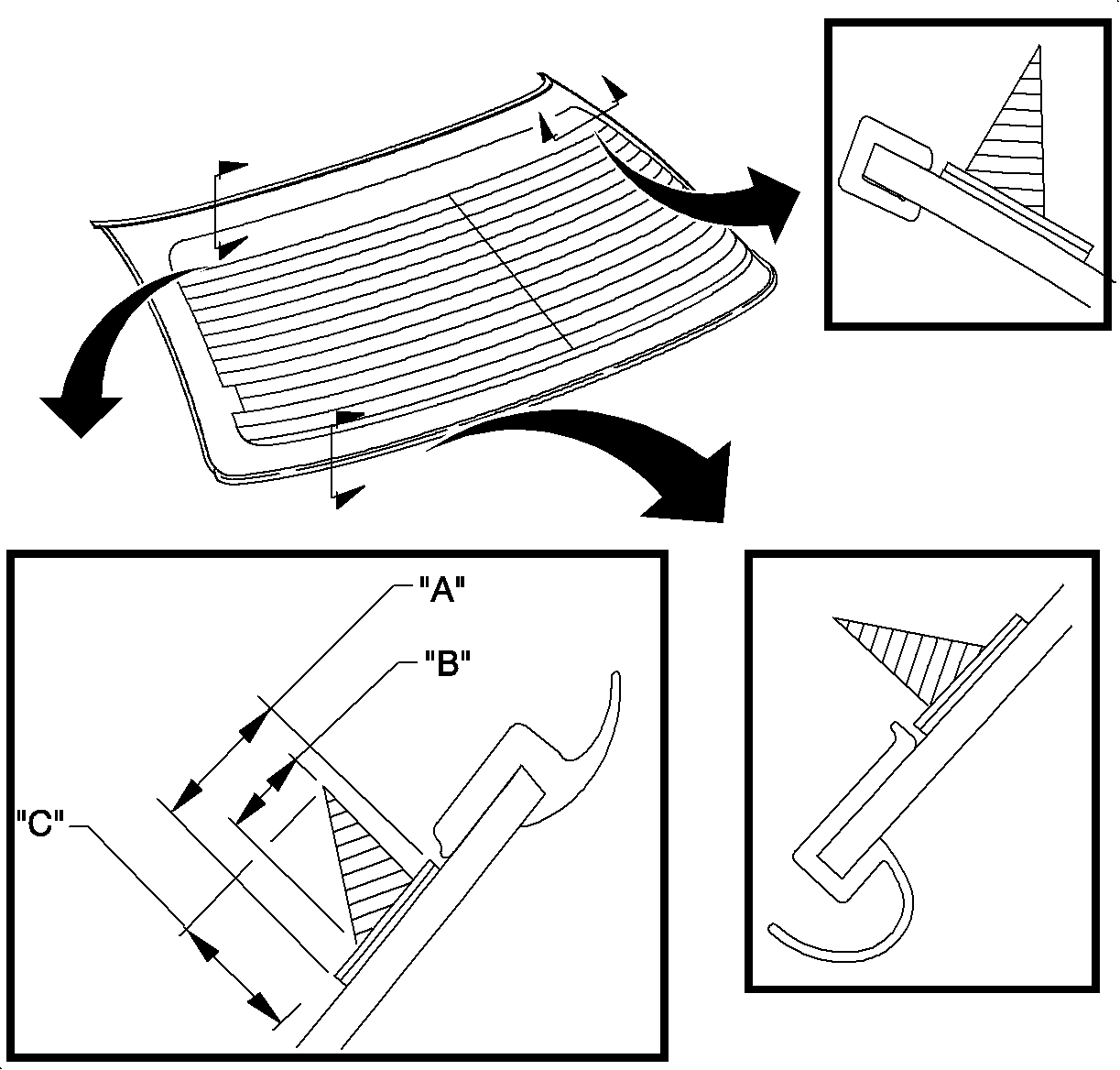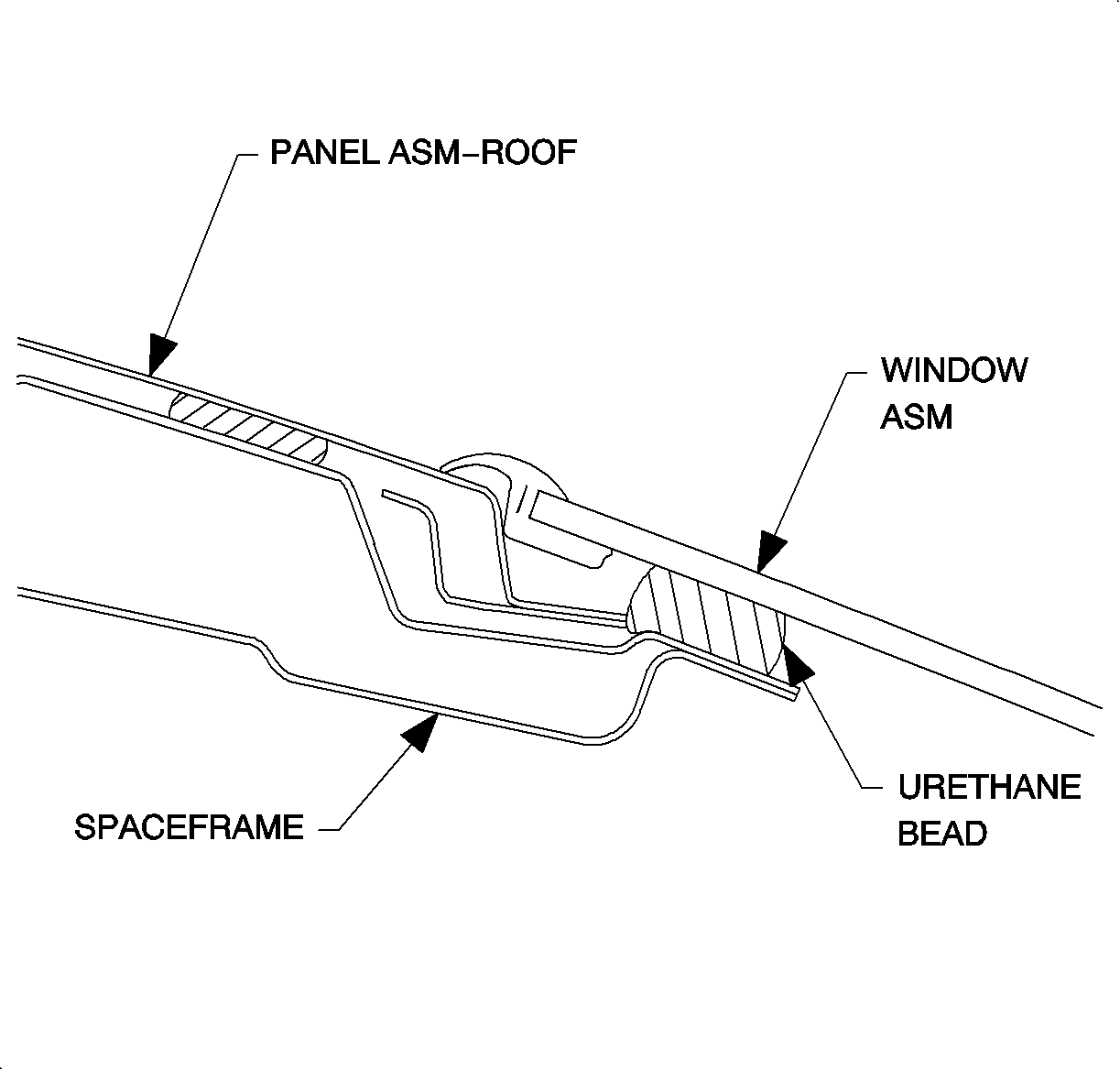Rear Window Replacement Sedan
Removal Procedure
- Remove the center high mount stop lamp cover.
- Unsnap the center high mount stop lamp from the roof and disconnect the wire connector.
- Lower the rear half of the headliner. Use lightweight wood or foam blocks to hold the headliner down.
- Remove the molding around the rear window carefully trying not to excessively stretch it.
- Disconnect the electrical connectors from the rear window defogger bus bars. Locate the electrical connectors and mark the location both inside and outside of the window with tape so as not to damage the wiring/connectors when using a power glass removal tool.
- With a power glass removal tool, cut the urethane seal along the roof, down the sides, and along the package shelf between the decklid hinges from inside of the vehicle.
- Use piano wire to cut the urethane at the lower corners. Feed the wire under the glass at the C-pillar through the inside and back out at the package shelf, then around the outside of the bead. Use a sawing motion to cut the urethane.
- With the aid of an assistant, remove the window assembly.
Caution: Refer to Glass and Sheet Metal Handling Caution in the Preface section.
Notice: Refer to Paint Damage Notice in the Preface section.




Caution: Refer to Urethane Smoke Caution in the Preface section.
Notice: Care must be taken not to damage the roof when using power glass removal tool.

Installation Procedure
- Remove the old urethane with a razor knife leaving a thin film, approximately 1-2 mm (0.04-0.08 in) around the perimeter of the window opening and the window assembly, if being reused.
- Clean the entire window opening and glass bonding surfaces with a clean, lint-free, alcohol-dampened cloth. Allow to air dry.
- Install the molding around the perimeter of the glass.
- Replace the molding if damaged or excessively stretched.
- For a new window assembly only, apply the glass prep primer (Clear #1) around the entire perimeter of the glass using a dauber. Wipe dry with a clean, lint-free cloth
- With a new dauber, apply the glass prep primer (Black #2) around the entire perimeter over Clear #1. Allow the primer to dry 5 minutes before applying the urethane.
- Apply a smooth continuous bead of adhesive directly to the old urethane adhesive in the glass opening or to the glass. Apply according to the dimensions shown.
- With aid of an assistant, lift the glass into the window opening. Align the top edge of the molding with the notches in the roof panel. Make certain the lip of the applied molding laps over the roof feature line.
- Press the glass firmly to wet-out and set the adhesive. Use care to avoid excessive squeeze out which would cause an appearance problem. Using duct tape, or equivalent, tape the glass up to the roof.
- Align the glass to the upper reveal molding using the adjusters at the base of the windshield and center the glass side-to-side.
- Watertest the vehicle using a soft spray. Use warm or hot water if available. Do not direct a hard stream of water on fresh adhesive material. Water applied on the top of the urethane adhesive, either during watertest or part of a separate operation, will speed up the cure of urethane.
- Inspect for leaks from inside the vehicle. Paddle in extra adhesive at the leak points using a tongue depressor or similar flat flexible tool.
- Connect the rear window defogger electrical connectors to the bus bars.
- Remove the previously installed blocks from underneath the headliner.
- Install the center high mount stop lamp.
- Install the center high mount stop lamp cover.

Important: Loose material and/or a rough surface on the remaining urethane may cause sealing problems during installation of the window assembly.
Important: If the applied molding becomes loose from the edge of the glass, clear and black prime the affected area. Allow to air dry. Apply a thin bead of urethane and install the molding.

Notice: To prevent corrosion, paint damage around the window opening by the power glass removal tool must be covered with pinchweld primer. Do not prime over existing urethane. Follow manufacturers recommendations for drying time.
Important: Shake the glass prep primer (Clear #1) well before using.
Specification
The primer area minimum width (A) is
18 mm (0.71 in).
Important: Shake the glass primer (Black #2) well before applying.
Specification
The primer area minimum width (A) is
18 mm (0.71 in).
Specification
| • | The bead dimension for the minimum width (B) is 10 mm (0.39 in). |
| • | The bead dimension for the minimum height (C) is 14 mm (0.55 in). |


Notice: Refer to Air Pressure Moving Glass Notice in the Preface section.



Important: The vehicle must remain at normal room temperature for 6 hours to complete the proper cure of adhesive. Refer to the manufacturer's recommendation.
